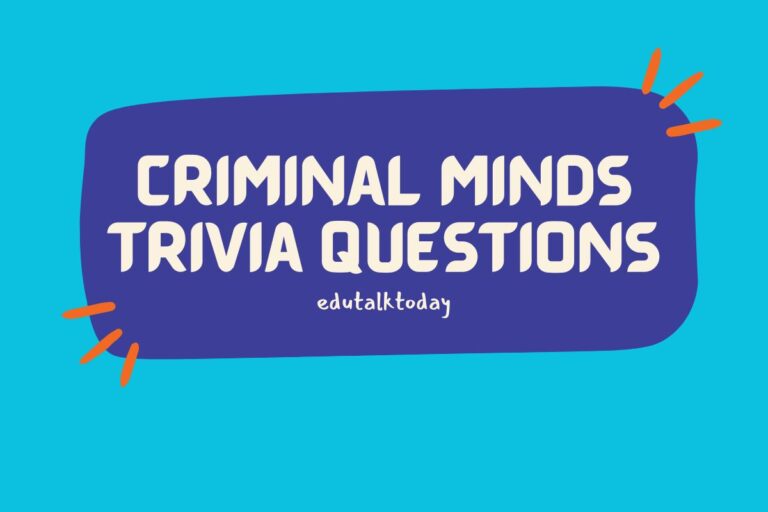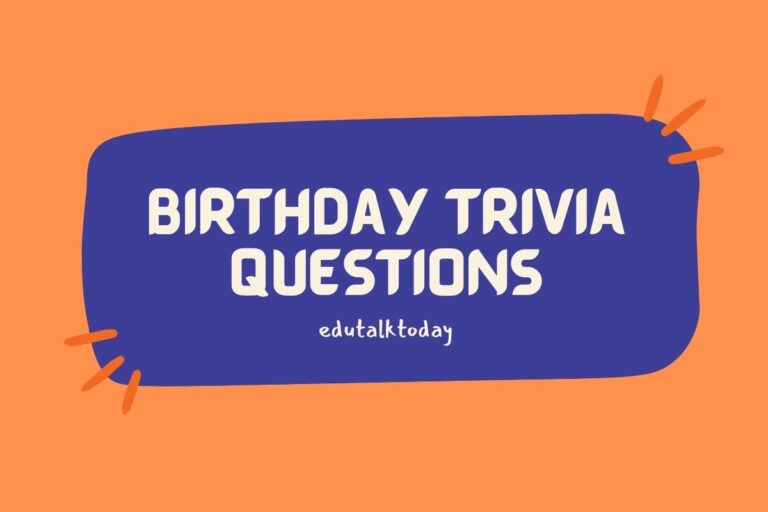43 Nervous System Trivia Questions

The nervous system is a fascinating network that coordinates all the activities of the body, from simple reflexes to complex thoughts.
Test your knowledge and learn some interesting facts about this essential system that keeps us moving and thinking.
After all, how well do you know your body?
Let’s find out.
Nervous System Trivia Questions
- What is the name of the area of the brain primarily responsible for regulating heart rate and breathing?
- Identify the neurotransmitter predominantly associated with the modulation of mood, emotion, and anxiety.
- What term describes the phenomenon where neurons are insulated to increase the speed at which electrical signals travel along the neuron?
- Name the part of the brain that is involved in the formation of new memories.
- What is the name of the largest part of the human brain, responsible for voluntary motor activity, cognition, emotion, and sensory processing?
- Which cranial nerve is known for being the longest and for innervating structures in the thorax and abdomen?
- What is the main function of the cerebellum in the human brain?
- Identify the disease characterized by chronic degeneration of the central nervous system, particularly affecting motor control and leading to tremors, rigidity, and bradykinesia.
- What is the term used to describe the gap between two neurons, where neurotransmitters are released to transmit signals?
- Which type of glial cell is responsible for producing myelin in the central nervous system?
- What brain structure is responsible for the regulation of thirst and hunger?
- Which part of the brain is responsible for processing visual information?
- What is the name of the process by which the brain interprets sensory information?
- Identify the type of neuron that carries impulses away from the central nervous system to effectors like muscles and glands.
- What is the name of the membrane potential of a neuron when it is not transmitting a signal?
- Which disorder is characterized by an autoimmune response that attacks the myelin sheath of nerve cells in the central nervous system?
- What term describes the ability of the brain to change and adapt as a result of experience?
- Name the neurotransmitter that is primarily involved in the control of movement and coordination.
- Which part of the autonomic nervous system is responsible for the ‘fight or flight’ response?
- What is the name of the rare neurological disorder that is marked by the sudden, uncontrollable urge to sleep?
- Identify the condition characterized by severe pain along the course of a nerve, often following a herpes zoster infection.
- What term is used to describe a group of neurological disorders that appear in childhood and involve permanent damage to motor control and coordination?
- Name the brain’s primary regulatory center for sleep and wakefulness.
- What type of sensory receptor detects changes in light?
- Which part of the brain is essential for understanding spoken language?
- What is the term for the network of neurons in the gastrointestinal tract sometimes referred to as the “second brain”?
- What is the name of the condition characterized by a sudden, transient alteration of brain function caused by an abrupt explosive, disorderly discharge of cerebral neurons?
- Name the type of cells in the nervous system that are responsible for the formation of the blood-brain barrier.
- What is the main function of the parasympathetic nervous system?
- Which part of the brain is primarily responsible for balance and coordination of muscles and the body?
- Identify the disorder characterized by repeated episodes of excessive synchronized neuronal activity, typically presenting with convulsions and loss of consciousness.
- What is the name of the phenomenon where damaged brain areas can reassign their function to other, undamaged brain areas?
- Name the condition that results from the death of dopamine-generating cells in the substantia nigra, a region of the midbrain.
- Which sensory system is responsible for providing the sense of smell?
- What term describes the minimum stimulus needed to trigger an action potential in a neuron?
- Identify the brain structure that acts as a relay station for auditory and visual information.
- What is the primary function of Schwann cells?
- Name the psychological condition characterized by a split between thought and emotion; it may involve hallucinations and delusions.
- Which part of the brain integrates sensory information and is involved in learning, memory, and emotion?
- What is the name given to the type of pain that feels like it is coming from a part of the body that has been amputated?
- Identify the genetic disorder that affects the nervous system and leads to the breakdown of nerve cells in the brain, affecting an individual’s functional abilities and usually resulting in movement disorders.
- Name the process by which neurotransmitters are reabsorbed by the neuron that released them.
- What is the term for the rapid, rhythmic eye movements that occur during certain stages of sleep?
Answers
- The Medulla Oblongata.
- Serotonin.
- Myelination.
- The Hippocampus.
- The Cerebrum.
- The Vagus Nerve (Cranial Nerve X).
- Coordinating voluntary movements and balance.
- Parkinson’s Disease.
- Synapse.
- Oligodendrocytes.
- The Hypothalamus.
- The Occipital Lobe.
- Perception.
- Motor Neuron.
- Resting Potential.
- Multiple Sclerosis.
- Neuroplasticity.
- Dopamine.
- The Sympathetic Nervous System.
- Narcolepsy.
- Postherpetic Neuralgia.
- Cerebral Palsy.
- The Suprachiasmatic Nucleus.
- Photoreceptors.
- Wernicke’s Area.
- The Enteric Nervous System.
- Seizure.
- Astrocytes.
- To conserve and restore the body’s energy.
- The Cerebellum.
- Epilepsy.
- Neural Plasticity or Functional Reorganization.
- Parkinson’s Disease.
- The Olfactory System.
- Threshold.
- The Thalamus.
- To insulate axons and facilitate the rapid transmission of electrical impulses.
- Schizophrenia.
- The Limbic System.
- Phantom Limb Pain.
- Huntington’s Disease.
- Reuptake.
- Rapid Eye Movements (REM).






